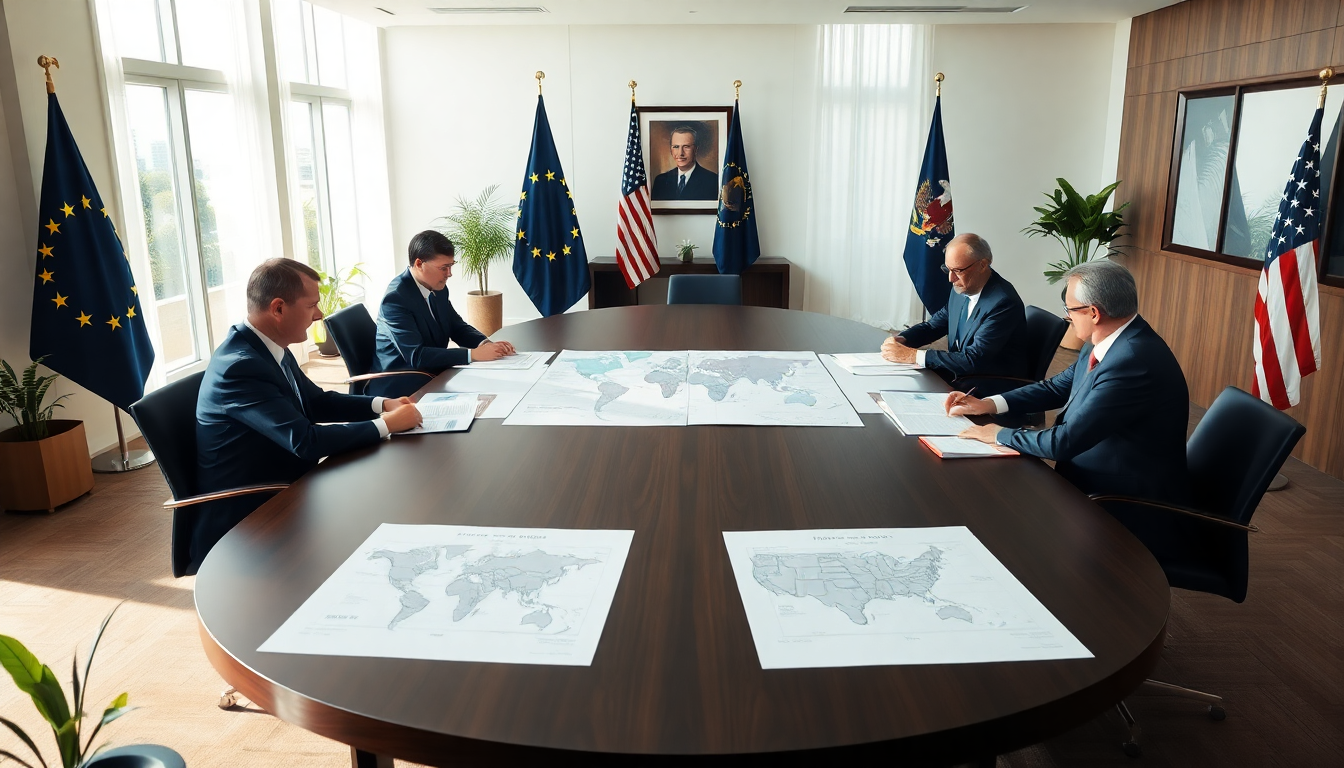Table of Contents
Trade negotiations between the European Union (EU) and the United States have become a hot topic lately, especially as member nations weigh the potential impacts of various agreements. Recently, Lithuania’s President Gitanas Nausėda shared a cautious yet optimistic view on these discussions, stressing the need for the EU to receive treatment on par with the United Kingdom in its dealings with the U.S.
This perspective reflects a shift in the EU’s attitude towards trade relations, particularly with the looming threat of tariffs that could shake up the economic landscape.
The Current Trade Climate: What’s at Stake for the EU?
In a recent interview, Nausėda suggested that the EU’s best hope is to secure a trade agreement akin to what the UK has with the U.S.
His comments indicate a significant change in the EU’s strategy; the initial skepticism about the UK’s trade pact with Washington has evolved into a more practical approach. The reality is clear: as discussions with the Trump administration progress, the EU might have to settle for a basic tariff agreement.
Adding to the urgency of these negotiations is a growing concern among EU leaders about the potential for a staggering 50 percent tariff on goods if a deal isn’t reached by the fast-approaching deadline. This situation calls for European leaders to stay nimble and responsive, especially with rising nationalism and protectionist policies influencing international trade.
Strategic Opportunities and Potential Pitfalls
At a recent summit, the conversation didn’t just revolve around tariffs; it also delved into the broader implications of transatlantic relations. Following a NATO agreement to ramp up defense spending, there seems to be newfound clarity between the U.S.
and the EU about shared challenges. This moment could be a golden opportunity for the EU to harness this momentum and bolster its trade discussions with Washington.
Yet, there’s a palpable sense of urgency in the air. Some EU nations worry that rushing into agreements might not be in their best interests.
For example, Germany is pushing for quick actions to secure favorable terms, while countries like France are cautious about making hasty decisions that could lead to unfavorable deals. An EU diplomat pointed out the difficulty of reaching a comprehensive tariff agreement within such a tight timeframe, suggesting that starting with an initial agreement based on specific principles might be the most realistic approach.
The Road Ahead: Challenges and Opportunities
As the July 9 deadline for negotiations approaches, the stakes couldn’t be higher. European leaders need to tread carefully, balancing the urgency of reaching an agreement with the necessity of safeguarding their national interests. Initially proposed retaliatory tariffs on U.S. goods were set at €95 billion but have now been scaled back to €25 billion, signaling the EU’s intention to avoid escalating into a full-blown trade war.
The road ahead is certainly challenging, yet it also opens doors for the EU to assert its position on the global stage. The evolving relationship with the U.S. is bound to shape Europe’s economic landscape for years to come. Leaders must remain alert and adaptable, ready to navigate the intricacies of international trade while advocating for the best outcomes for their member states. Are they up for the challenge?





